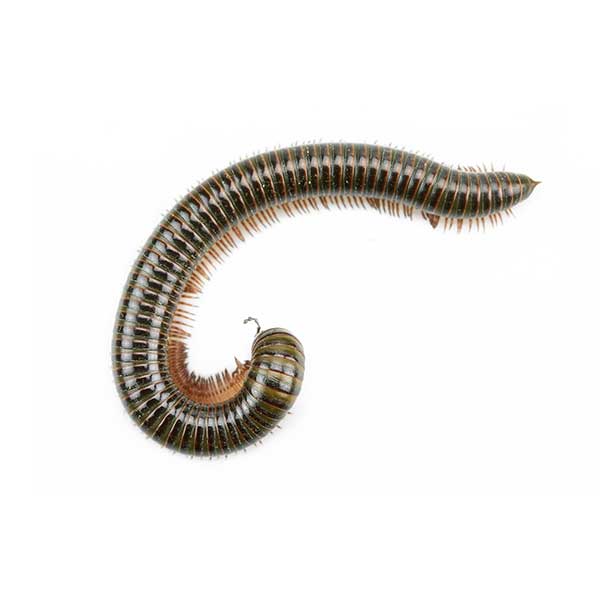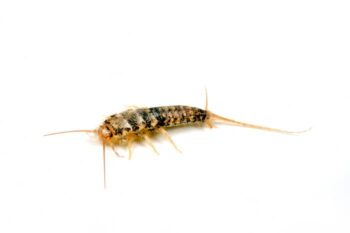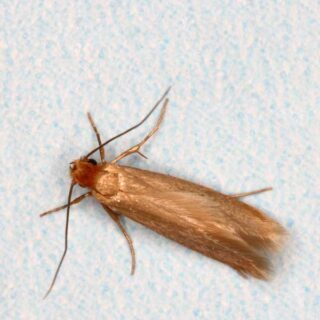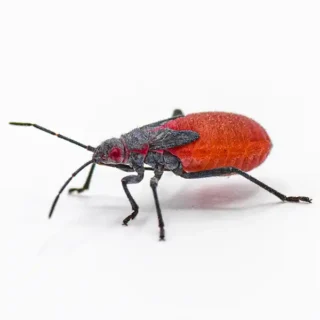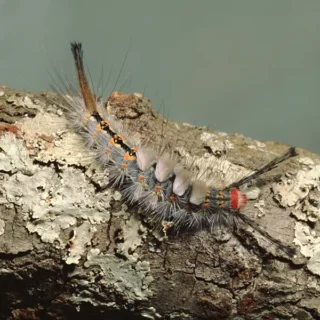Identifying Millipedes in Florida
Millipedes, sometimes called “thousand leggers”, are household pests and common insects found in Florida. With their long, segmented bodies and numerous legs, these detritivores play an essential role in the ecosystem by breaking down organic matter and enriching the soil.
These creatures normally live outdoors where they feed on damp and decaying wood and vegetable matter, as well as tender roots and green leaves on the ground.
Many millipede species protect themselves by means of glands that secrete an unpleasant odor.
Where in Florida Do Millipedes Live?
Millipedes inhabit a variety of environments, and they are common in Florida due to the state’s humidity. These include moist forests, gardens, and landscaped areas. In natural settings, millipedes prefer areas with abundant leaf litter, decaying wood, and rich organic matter, which provide both food and shelter.
In residential areas, they can often be seen in gardens where mulch and compost are present, as these materials create a favorable habitat.
In nature, millipedes are scavengers and feed mainly on decaying organic matter. They occasionally feed on young plants but the damage inflicted is seldom significant. Millipedes have high moisture requirements and tend to remain hidden under objects during the day. Millipedes often leave their natural habitats at night and crawl about over sidewalks, patios, and foundations. At certain times of the year, especially during autumn, they may migrate into buildings in great numbers.
How Common Are Millipedes In Florida?
Millipedes are quite common in Florida – over 50 species – especially in areas with warm and humid conditions. Spring and fall are both ‘millipede seasons’. They are frequently found in gardens, forests, and wetlands throughout the state.
Their populations tend to increase during warmer months and after rainfall, making encounters with them more likely for residents. Millipedes are a common sight in Florida’s diverse ecosystems.
Are Millipedes Dangerous?
Millipedes are generally not dangerous to humans or pets. While millipedes sometimes enter structures in large numbers, they do not bite, sting, or transmit diseases, nor do they infest food, clothing, or wood.
Millipedes are simply a nuisance by their presence, often invading crawl spaces, damp basements, and first floors of structures at ground level. Frequent sightings of these pests indoors usually mean that there are large numbers breeding on the outside in the lawn, or beneath mulch, leaf litter, or debris close to the foundation.
Because of their moisture requirement, millipedes do not survive indoors for more than a few days unless there are very moist or damp conditions.
If you are dealing with excess millipedes in your Florida property, contact your local insect exterminators.
Need help with Millipede control?
FAQs
Are Florida Millipedes Poisonous?
Millipedes in Florida – or in any other state! – are not poisonous. They do not possess venom and are harmless to humans and pets. However, when threatened, some species may secrete a defensive fluid that can cause mild skin irritation or allergic reactions in sensitive individuals. This secretion is intended as a defense mechanism to deter predators and can have an unpleasant odor. While they may appear intimidating due to their many legs and size, millipedes play a beneficial role in the ecosystem by decomposing organic matter, and they pose no significant threat to human health.
Why Are Millipedes In My House in Florida?
Millipedes may enter your home in search of moisture and shelter. They are attracted to damp environments, especially during periods of high humidity or after rainfall, making Florida the perfect region for this particular pest. If your Floridian home has areas of excess moisture, such as bathrooms, basements, or crawl spaces, it can create a welcoming environment for these creatures. Millipedes may also venture indoors when they are displaced from their outdoor habitats due to landscaping, garden work, or heavy rains. While they can be a nuisance, their presence typically indicates a need to address moisture levels in your home.
Why Am I Getting Millipedes in My House?
You may be getting millipedes in your house due to various factors, primarily related to moisture and environment. Florida’s humid climate provides ideal conditions for millipedes, prompting them to seek refuge indoors, especially during heavy rain or high humidity. Address your moisture issues promptly, and if your home has leaks, poor drainage, or decaying organic matter, make sure to fix these issues.
How to Get Rid of Florida Millipedes?
Focus on reducing moisture levels and eliminating their hiding spots. Start by fixing any leaks and improving drainage around your home. Regularly clean up organic debris, such as leaves and mulch, in your garden to minimize their habitat. Seal cracks and gaps in windows, doors, and foundations to prevent millipedes from entering. You can also set up traps using rolled-up newspapers or use diatomaceous earth as a natural deterrent.
Regularly checking and cleaning potential entry points will help keep millipede populations in check. If your millipede infestation is large, contact your local pest control experts today.

